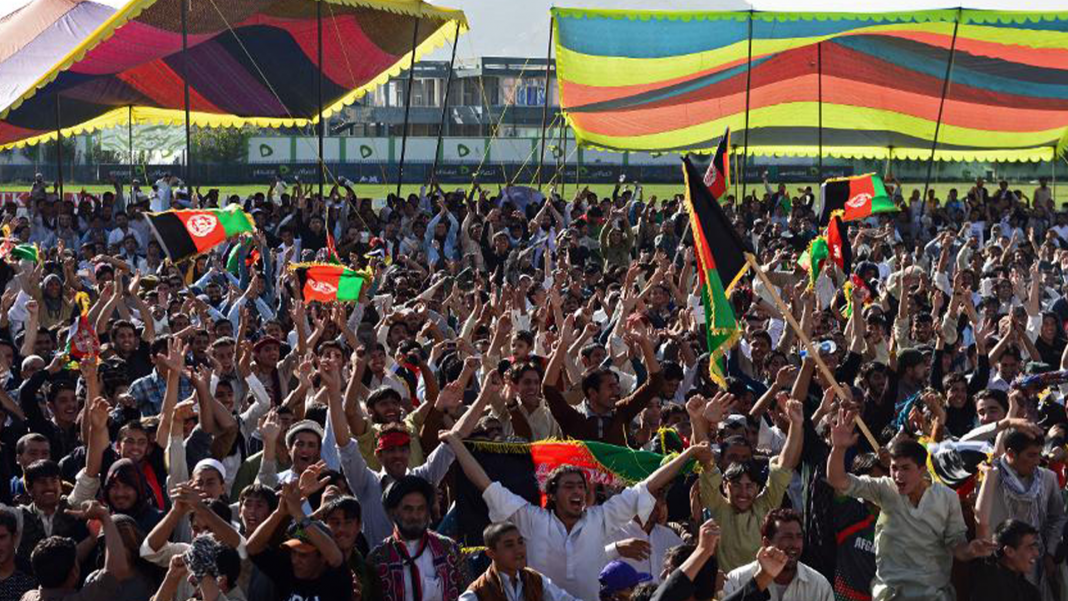By Rod Lyall and Nishadh Rego
Rod Lyall:
No-one who saw Tracey Holmes’ report for the ABC’s 7:30 programme on Monday night, or who has listened to the edition of her podcast, The Ticket, on which that report was based, could fail to be impressed by the passion, courage and commitment of the young Afghan women cricketers who last year fled their country and made the difficult, dangerous journey to Pakistan to pursue their dream of playing the game they love.
It will have come as a shock to many of us that 22 of the Afghan Cricket Board’s (ACB) 25-strong national women’s squad, established before the Taliban returned to power, have been living in Australia for the past year.
And it is astonishing that even when it was announcing that it would dump its scheduled men’s ODI series against Afghanistan because of the Taliban regime’s brutal suppression of women’s educational, sporting and human rights, Cricket Australia made no mention of the women’s presence, or of the steps – if any – that have been taken to assist the development of their cricket.
Less surprising, though, is the ICC’s response, informing the women that their future is a matter for the ACB: it’s the same answer that was made to non-white players in South Africa under apartheid, and to white and Asian players during the Mugabe regime in Zimbabwe.
The ICC has, after all, never found a moral issue it couldn’t fail to rise to.
But the question remains: what is to be done to enable this brave group of Afghan women to achieve their goal of playing cricket on the international stage?
Nishadh Rego:
These young women fled Afghanistan not just because they are women, but because they knew they would be targeted for playing cricket.
Now resettled in a country, which – for all its own human rights challenges – supports and celebrates women’s sport, the players’ perspectives are clear and practicable.
They want to play cricket, and not just as individuals in Australia’s club cricket system, but as a team, representing Afghanistan on the world stage.
Even though they live in exile, there is little doubt in anyone’s mind that these twenty-two women constitute the legitimate Afghanistan national women’s team (barring three who are in Canada).
They have sacrificed much to learn and play the sport inside Afghanistan. For their troubles, they were finally given cricket contracts in 2021. And they are coached by the indomitable Diana Barakzai. Barakzai, who like many of her male counterparts, learnt to play the sport in Pakistan, and boasts a proud history as a player, administrator, and founder of organized women’s cricket in Afghanistan.
Some may say that bypassing the national cricket board and creating a national team-in-exile out of thin air undermines the former’s sovereignty as the designated representative authority for cricket in the country, and worse still, absolves it of any presumed responsibility for promoting women’s cricket.
Unfortunately, there is no semblance of official women’s cricket activity inside Afghanistan, despite the Afghanistan Cricket Board (ACB) telling the ICC’s Afghanistan Working Group in November 2022 that it supported ‘in principle’ the development of women’s cricket.
In these unique circumstances, there must come a point where ACB abrogates its right to determine how Afghan women are represented in international cricket.
Of course, the fact that Cricket Australia was one of the ICC heavyweights who voted to grant Afghanistan the ‘Full Member’ status in 2017, exempting the ACB from fielding a women’s national team and development program, grants the ACB some standing in any negotiations to reconstitute the women’s team in-exile. “You never required us to field a women’s team in the past. Why now?” we might hear Azizullah Fazli saying.
Regardless, it is these players who embody Afghan women’s cricket and carry its mantle. It isn’t fanciful or completely naïve to suggest that they can be supported to build a development program-in-exile, comprising of women and girls from the burgeoning Afghan diaspora in Australia.
Perhaps they will even inspire young girls and women inside the country to take up the sport and challenge the status quo.
Rod Lyall:
A key practical question, of course, is where the money is to come from for the training programmes and playing schedules which will be needed if the women are to achieve their goals.
The first, most obvious answer is from the $US37 million which the ICC allocated to the ACB in the last funding round for the development of men’s and women’s cricket; the release of a substantial chunk of that money for the exiled women should be made a condition of Afghanistan’s continued membership at the current level.
We must be realistic: there are strong limits to what the ACB can say in public without incurring the wrath of the Taliban, and it is, after all, true that the chairman Azizullah Fazli and CEO Najib Khan were installed by the new government shortly after its takeover in 2021.
But they must be told in no uncertain terms that if they want the men, themselves based outside the country and playing their ‘home’ games in the UAE, to continue to be recognised as an Afghan national side and to be eligible for ICC competitions and events, they must accept the development programmes which the women will need in order to progress.
And any shortfall in funding should be made up by the ICC itself. As Tracey Holmes points out, they have made a great deal of the fact that they have put women’s cricket front and centre of their strategic planning, and those fine words will ring even more hollow than usual should they now just throw up their hands and say that there’s no money and it’s all too difficult.
Cricket Australia can do a great deal to help, since it has coaching resources, facilities and infrastructure to underpin the effort. But if the ICC has any shred of commitment to making cricket a force for good in the world, then this is the moment for it to step forward and give these brave, resourceful women the support they need.
Nishadh Rego:
The point about the ICC ‘stepping forward’ is a complex one.
The ICC Board’s ‘Afghanistan Working Group’, set up to review the state of cricket in Afghanistan after the Taliban takeover, is chaired by Imran Khawaja, and includes Lawson Naidoo (South Africa), Ross McCollum (Ireland), and Ramiz Raja (Pakistan).
This group, which has reportedly met Taliban officials, is likely to have some influence in discussions at the March 2023 ICC Board Meeting. It must be honest and realistic in its assessments about the prospect of women’s cricket restarting in Afghanistan today or at any time in the future.
Ultimately, decisions such as the one we are talking about are made collectively at the Board level, where the Council’s Full Member representatives, Cricket Australia included, have significant, and often decisive influence.
Australia’s withdrawal from the ODI series against the Afghanistan men’s cricket team and and the provision of opportunities for the exiled women domestically are positive moves. But they are inconsequential if Cricket Australia fails to step up before and during the Board deliberations in March, expending some capital if necessary.
Stepping up requires arguing strongly for the following position: that the women’s cricket team in-exile must be admitted into international cricket, administered by the ICC development program team, and funded from allocations originally distributed to the ACB, in return for the maintenance of the status quo for Afghanistan’s men. Any attempts by the ACB to kickstart official women’s cricket inside Afghanistan can be reviewed by the Working Group in 12 or 24 months.
It also requires drawing a line in the sand by agreeing that there will never again be exemptions made for granting Full Membership (or indeed any membership) for countries that cannot demonstrate a practical commitment to women’s cricket.
Without being privy to the internal dynamics of the board, it is likely that the ACB are working hard to secure support for the status quo – the continued membership, international participation, and funding of men’s cricket in Afghanistan alongside a vague promise of gradual growth in the women’s game – from other members.
What they have to offer is unclear; and the fact that the ACB currently sits on a women’s cricket budget which likely goes elsewhere, must not sit comfortably other Full Members.
Succeed and we could see Diana Barakzai and her charges make their international debuts in 2023.
You’re reading Emerging Cricket — brought to you by a passionate group of volunteers with a vision for cricket to be a truly global sport, and a mission to inspire passion to grow the game.
Be sure to check out our homepage for all the latest news, please subscribe for regular updates, and follow EC on Twitter, Facebook, LinkedIn and YouTube.
Don’t know where to start? Check out our features list, country profiles, and subscribe to our podcast.
Support us from US$2 a month — and get exclusive benefits, by becoming an EC Patron.







